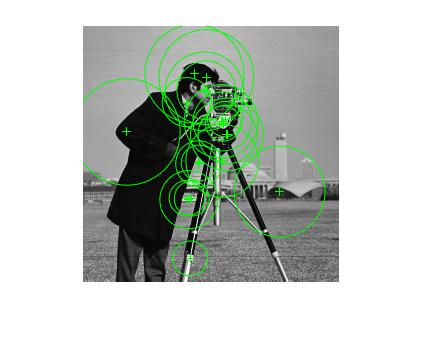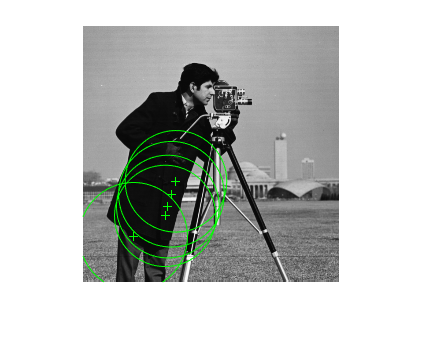detectKAZEFeatures
Detect KAZE features
Description
points = detectKAZEFeatures(I)KAZEPoints object containing information about KAZE keypoints detected
in a 2-D grayscale or binary image. The function uses nonlinear diffusion to
construct a scale space for the given image. It then detects multiscale corner
features from the scale space.
points = detectKAZEFeatures(I,Name=Value)detectKAZEFeatures(I,Threshold=0.003) sets
the threshold to exclude less significant local extrema to
0.003.
Examples
Input Arguments
Name-Value Arguments
Output Arguments
References
[1] Alcantarilla, P.F., A. Bartoli, and A.J. Davison. "KAZE Features." ECCV 2012, Part VI, LNCS 7577. 2012, p. 214
Extended Capabilities
Version History
Introduced in R2017b
See Also
Functions
detectSURFFeatures|detectMinEigenFeatures|detectBRISKFeatures|detectFASTFeatures|detectMSERFeatures|detectORBFeatures|extractFeatures|extractHOGFeatures|detectHarrisFeatures|detectFASTFeatures|matchFeatures

